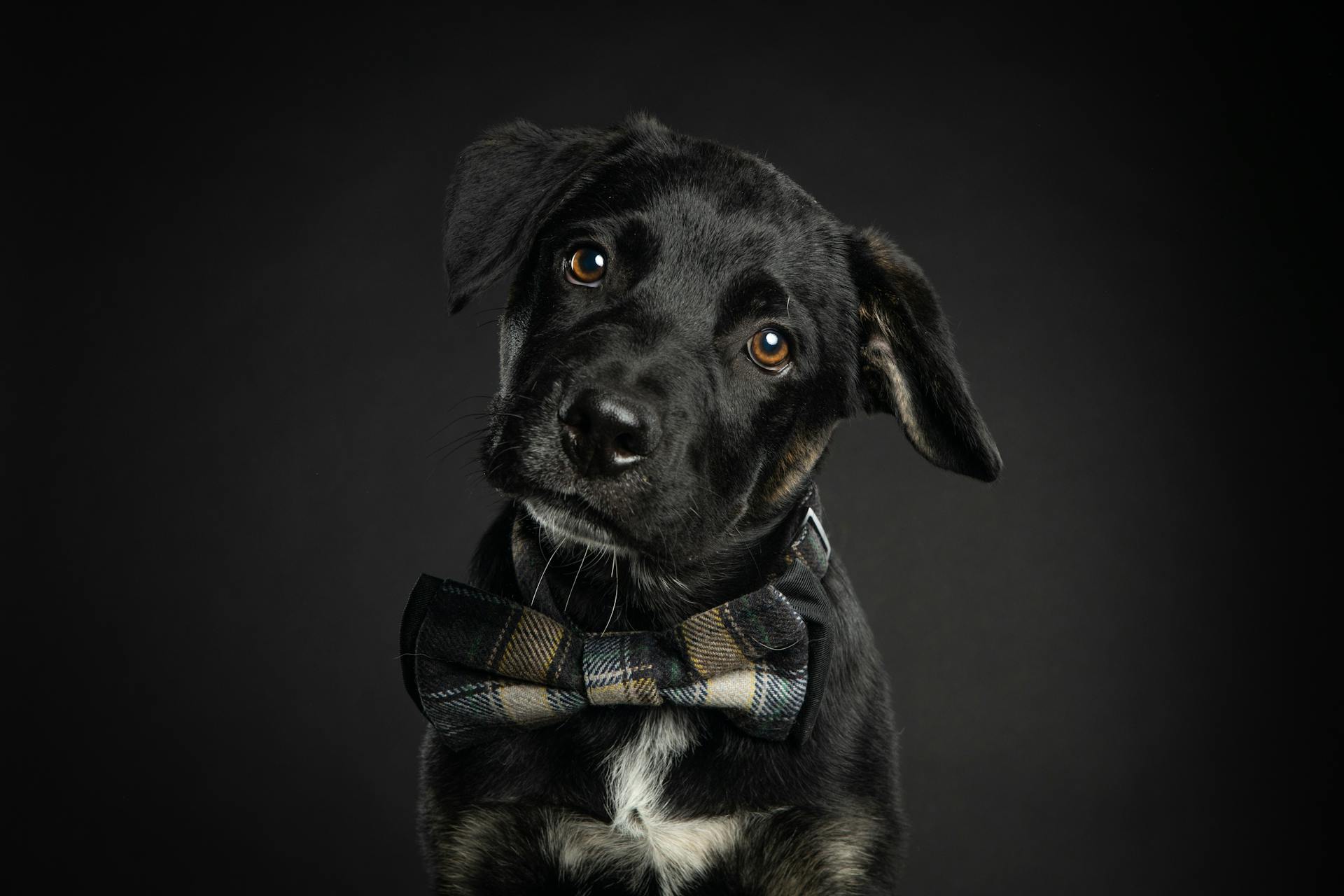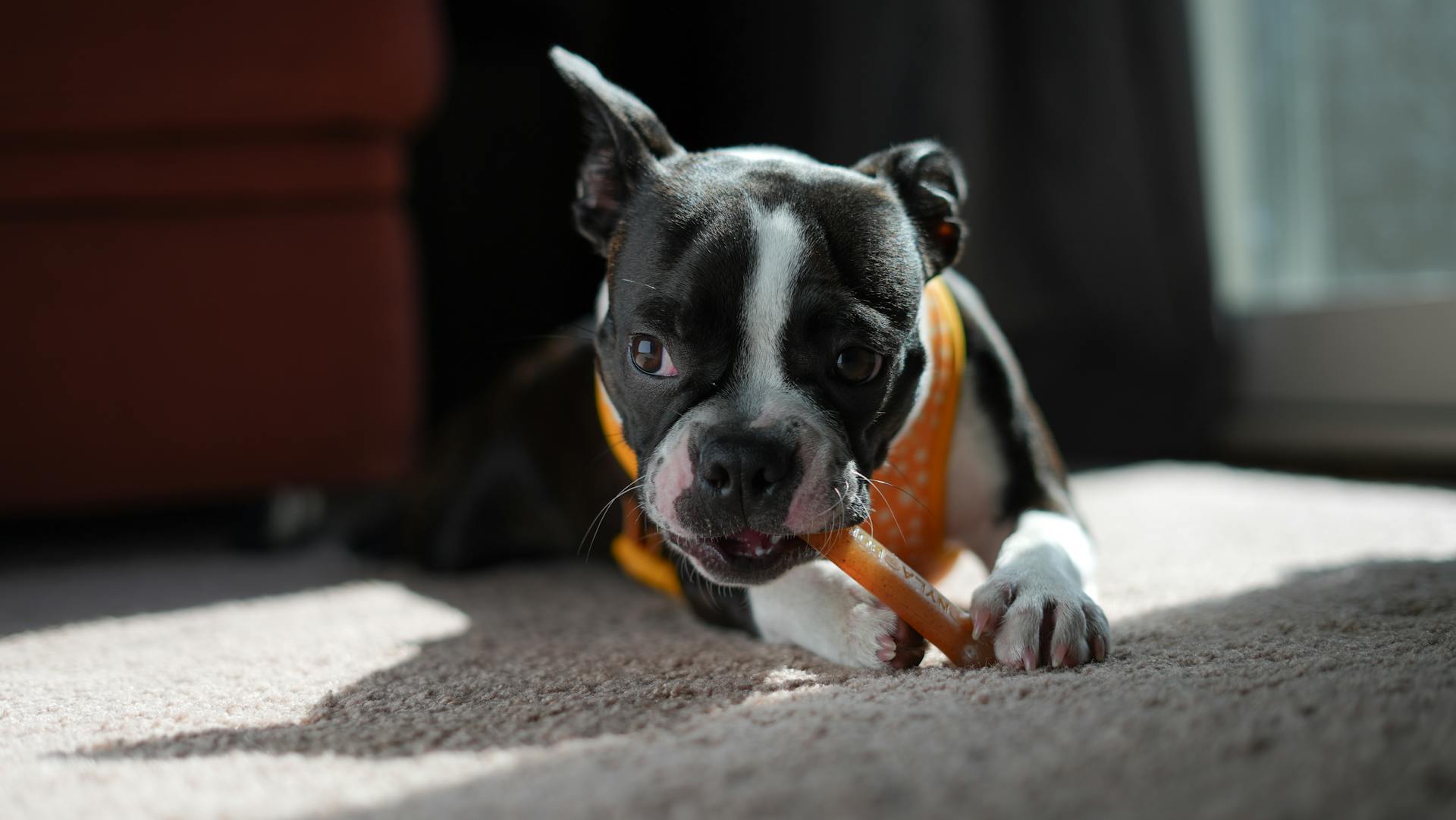
Dealing with dandruff on your Shih Tzu can be frustrating, but understanding the underlying causes is key to finding a solution. Shih Tzus are prone to seborrheic dermatitis, a condition that leads to oily skin and flaky dandruff.
Regular grooming is essential to manage dandruff in Shih Tzus. In fact, a study found that regular brushing can reduce shedding and prevent hair from accumulating in the coat.
The frequency of grooming depends on the individual dog's needs. For example, some Shih Tzus require daily brushing to prevent matting, while others may need it only a few times a week.
What Is Shih Tzu Dandruff?
Shih Tzus are prone to seborrhea, a skin disorder that causes scaly, flaky, itchy, and red skin. This condition is especially common on the back, face, and flanks of dogs, where sebaceous glands are most active.
Seborrhea can manifest as either dry or oily skin, with most dogs experiencing a combination of both. The skin areas affected by seborrhea often flake off, leaving behind dandruff-like patches that can be seen on the dog's bedding and other favorite resting spots.
Here's an interesting read: Shih Tzu Skin Problems Black Spots
In Shih Tzus, seborrhea tends to worsen in areas with skin folds, such as the feet, neck, lips, armpits, thighs, and underside. These areas may become red and inflamed, with a dry or oily feel to the lesions.
Many Shih Tzus will develop an unpleasant odor associated with seborrhea, which can be exacerbated by secondary bacterial or yeast skin infections. Regular grooming and veterinary check-ups can help manage this condition and prevent it from becoming a major issue.
Discover more: Shih Tzu Skin Problems Scabs
Causes and Risk Factors
Shih Tzu dandruff is often caused by a combination of genetics and skin allergies, making this breed particularly prone to the condition.
Many Shih Tzus have a low-shedding coat, which can make them more susceptible to skin problems like dandruff.
Malassezia is a type of fungus that naturally occurs on the skin of dogs, but it can overgrow and cause dandruff in Shih Tzus with sensitive skin.
Check this out: Bumps on Shih Tzu Skin
Environmental Factors
Colder weather conditions can cause a dog's coat to dry out, especially when combined with increased use of central heating.
Using strong cleaners, washing detergents, or sprays in your home can irritate your dog's coat.
Dry air from heating systems can strip your dog's coat of its natural oils, leading to dryness and irritation.
Be mindful of any harsh chemicals you use in your home, as they can easily transfer to your dog's coat and cause irritation.
Expand your knowledge: Shih Tzu Coat
Idiopathic
Idiopathic conditions can be frustrating for both dogs and their owners.
Sometimes, the cause of seborrheic dermatitis in dogs is unknown, and this is referred to as idiopathic.
The term 'idiopathic' means that the cause of the condition is spontaneous and not yet identified. Your vet will be able to give you more advice on the management of your pet's condition.
If your dog's dandruff can't be determined, it may be classified as 'idiopathic.' Treatment for symptoms of dogs with dry, flaky skin can be effective, but the underlying cause might not be identified.
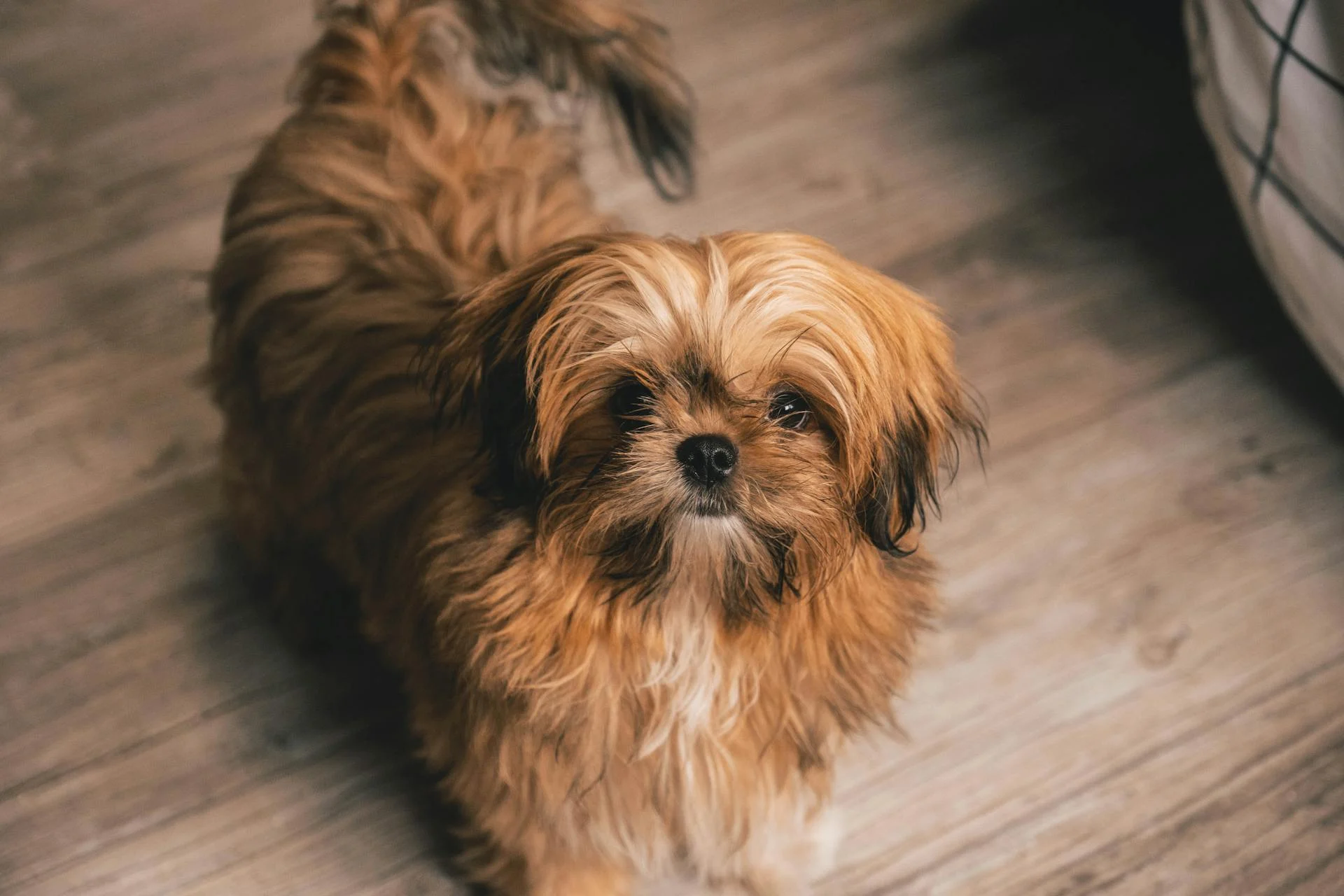
Dogs with idiopathic seborrhea may exhibit mild or seasonal symptoms, but if they also show signs of itchiness, skin odor, excessive dandruff, loss of hair/fur, irritated, red skin, or excessive licking of paws or legs, it's essential to consult a vet for a physical examination.
Here are some potential signs that may indicate further diagnostic testing is needed:
- Itchiness
- Skin odor
- Excessive dandruff
- Loss of hair/fur
- Irritated, red skin
- Excessive licking of paws or legs
- Signs of feeling unwell or being uncomfortable
Symptoms and Warning Signs
If your Shih Tzu has dry flaky skin, it's a sign that their skin might not be in optimal condition. This can lead to more serious issues if left unchecked.
Dry flaky skin, hair loss, itching and scratching, reddened areas of skin, raised lumps or bumps on the skin, oozing/infected areas, scabs, and a change of coat or skin color are all symptoms of skin problems in dogs.
Some common symptoms of seborrhea in dogs include a very dry, dull coat, dandruff, greasy, oily skin that smells bad, crusted, plaque-like skin lesions, and itching that ranges from mild to severe.
Here's an interesting read: Shih Tzu Itching and Licking
If your Shih Tzu is experiencing any of these symptoms, it's essential to investigate the cause to prevent further complications.
Here are some specific symptoms to look out for in Shih Tzus:
- Dry flaky skin
- Hair loss
- Itching and scratching
- Reddened areas of skin
- Raised lumps or bumps on the skin
- Oozing/infected areas
- Scabs
- Change of coat or skin color
- Thin skin
If your Shih Tzu is experiencing any of these symptoms along with other issues like weight loss, increased drinking or urination, vomiting, diarrhea, etc., it's crucial to get them checked by your veterinarian as soon as possible.
Treatment and Remedies
Treatment for Shih Tzu dandruff often involves addressing the underlying cause, which can be a reaction to an ingredient in their diet. This can be achieved by switching to a limited ingredient diet high in protein and low in carbohydrates.
Frequent bathing with anti-seborrheic shampoos, typically every 2 or 3 days, can help remove excess keratin and alleviate symptoms. These shampoos often contain coal tar and salicylic acid.
Regular grooming is also essential to prevent skin irritation and remove dead hair. It's best to check with your vet before using any grooming products on your dog.
Here are some additional remedies you can try:
- Groom your pet regularly to prevent skin irritation and remove dead hair.
- Bathing your dog can help with dandruff outbreaks and bacterial and fungal skin infections.
- Supplements such as essential fatty acids (e.g. flaxseed oil and cod liver oil) can be helpful, but be sure to check with your vet first.
- Using a humidifier in your home can help prevent dry skin, especially during winter months.
It's essential to work with your veterinarian to determine the best course of treatment for your Shih Tzu's dandruff, as they can prescribe medicated shampoos and other treatments as needed.
How Vets Diagnose
A veterinarian will start by performing a physical examination to check your dog's skin and look for other symptoms.
They'll also ask about your dog's behavior, such as how long they've been experiencing skin issues, if they've been scratching, and if there are any changes in their food and water intake.
A skin scraping can be used to test for mites and lice, which can cause skin irritation in dogs.
An impression cytology of skin and ear debris can help diagnose a yeast or bacterial infection that looks like seborrhea.
Blood chemistry panels and thyroid hormone level tests can help identify underlying conditions such as diabetes or hypothyroidism.
In some cases, a biopsy may be necessary to rule out autoimmune disease or cancer.
Here are some tests your vet may perform to diagnose your dog's skin condition:
- A skin scraping for mites and lice
- An impression cytology of skin and ear debris
- A blood chemistry panel
- A blood test for thyroid hormone levels
- A biopsy
Treatment for Problems

Treatment for seborrhea is aimed at the underlying cause, but if no underlying cause can be found, a diagnosis of primary or idiopathic seborrhea is made. Unfortunately, there is no specific treatment for primary or idiopathic seborrhea.
Treatments that help manage seborrhea include omega-3 fatty acid supplements, anti-seborrheic shampoos or sprays, corticosteroids, retinoids, oral cyclosporine, and antibiotics to treat secondary bacterial infections.
Bathing your dog regularly can help with seborrhea outbreaks and bacterial and fungal skin infections. Your vet may prescribe a medicated shampoo for your dog; follow the instructions carefully.
Frequent bathing is continued for 2-3 weeks or longer, until the skin improves. The goal of bathing is to remove excess keratin.
Your dog may also be started on prednisone to decrease inflammation and debris buildup.
Common symptoms of skin problems in dogs include dry flaky skin, hair loss, itching and scratching, reddened areas of skin, and raised lumps or bumps on the skin.
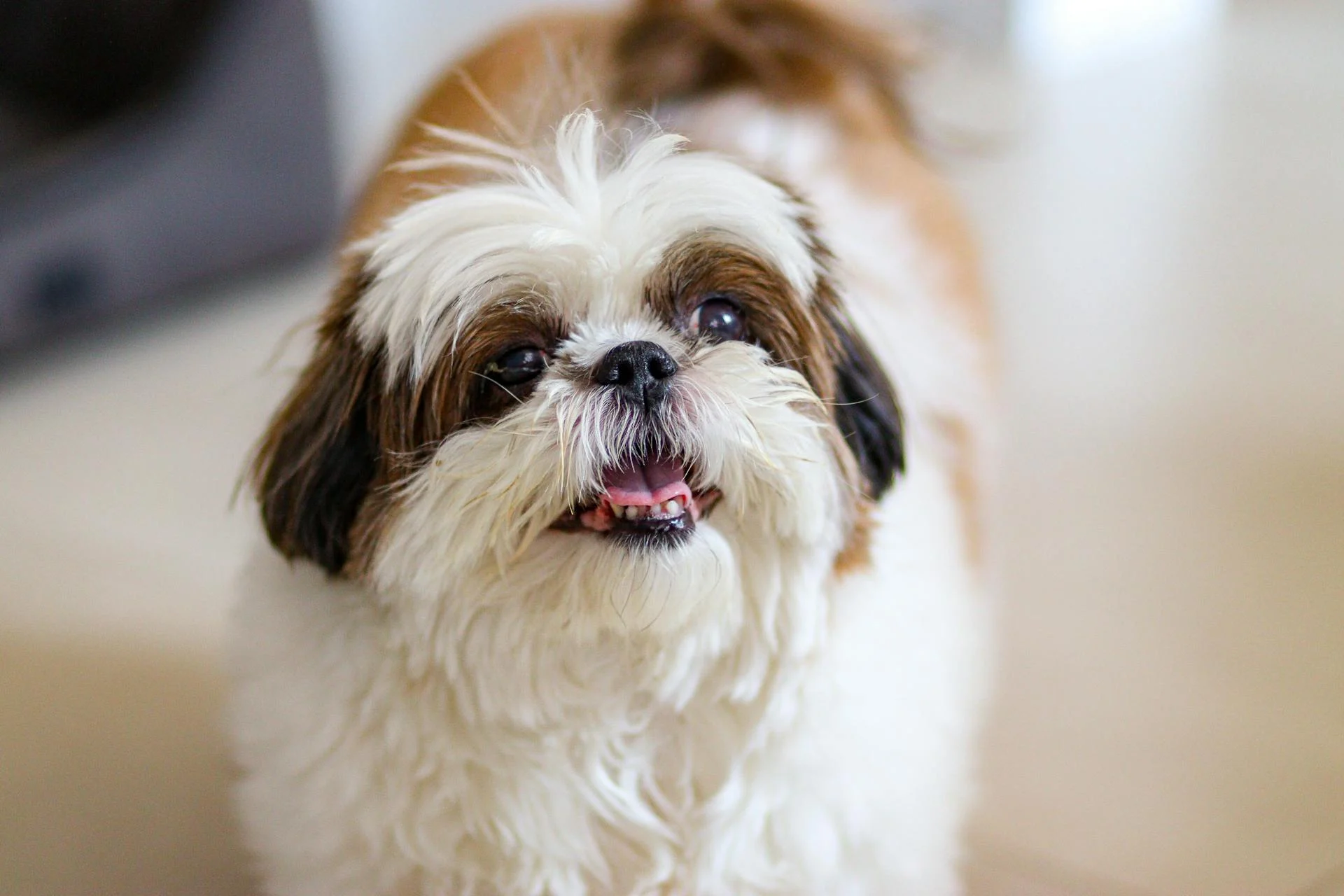
To address the nutrition your dog is getting, you can try switching to a limited ingredient diet that's high in protein and low in carbohydrates.
Here are some common treatments for skin problems in dogs:
- Medicated shampoos
- Corticosteroids
- Retinoids
- Oral cyclosporine
- Antibiotics to treat secondary bacterial infections
- Antifungals if yeast infections are present
- Prednisone to decrease inflammation and debris buildup
It's essential to work with your veterinarian to determine the best course of treatment for your dog's specific skin problem. Regular rechecks with your veterinarian are crucial to monitor how your dog is responding to treatment.
Recommended read: Shih Tzu Meaning
Common Conditions and Issues
Shih Tzu dandruff can be caused by a variety of factors, including allergies. Dogs with allergies may be flakier and itchier at different times of the year, and dandruff usually appears alongside other symptoms like recurring ear and skin infections.
Some common causes of dandruff in dogs include genetic conditions, such as primary seborrhea, which is seen in breeds like Basset Hounds and Cocker Spaniels.
A dry environment can also contribute to dandruff, making the use of a humidifier in your home a helpful preventative measure.
Nutrition Issues
Nutrition Issues can affect your dog's skin and coat, so it's essential to feed them a balanced diet that includes foods with fatty acids like omega-3s and omega-6s.
Foods with high levels of fatty acids, such as omega-3s and omega-6s, are crucial for your dog's skin and coat health. However, only your veterinarian can determine if your pet requires supplemental nutrients.
Poor quality dog foods can lead to multiple nutritional deficiencies that cause skin problems, including flaky dry skin and hair loss. If your dog is experiencing these issues, it may be worth reevaluating their diet.
High quality dog foods, on the other hand, tend to have a higher protein content, lower percentage of carbohydrates, and a limited ingredient list. They also don't contain preservatives or additives, and meet AAFCO's standards for a complete and balanced diet.
Allergies
Allergies are a common condition in dogs, and they can be caused by a variety of factors, including food allergens and environmental allergens like dust mites, pollen, and household cleaners.
Dogs with allergies often exhibit skin problems, such as dry, flaky skin, redness, and scabs or hives. They may also exhibit extreme itching or rubbing their face and belly on the floor.
Some common symptoms of allergies in dogs include chronic ear and skin infections, and a constant licking of their paws. Dog dandruff is often just one of multiple symptoms of an allergy.
Here are some common signs of allergies in dogs:
- Dry, flaky skin
- Reddened sore areas
- Scabs or hives
- Extreme itching or rubbing their face/belly off the floor
- Chronic ear and skin infections
- Constant licking of their paws
Infections
Infections can be a significant contributor to your dog's dandruff problem. Bacterial infections, such as pyoderma, can cause severe skin irritation and discomfort to dogs.
Fungal infections, like ringworm, are also common and can cause dry hairless patches of skin. Ringworm is zoonotic, meaning it can spread to humans, so quick treatment is recommended.
Skin bacterial and fungal infections can take advantage of damage or weaknesses in your dog's skin, leading to dandruff. These underlying conditions will have to be treated appropriately to address the dandruff issue.
Take a look at this: Dog Skin Diseases Ringworm
Some common signs of skin infections include itchiness, an odor to the skin, excessive amounts of dandruff, and hair loss. If you notice any of these symptoms in addition to dog dandruff, it's time to schedule an appointment with your veterinarian.
Here are some possible underlying causes of skin infections:
- Bacterial infections (e.g. pyoderma)
- Fungal infections (e.g. ringworm)
- Yeast infections
Your veterinarian may perform a physical exam, skin scrape, culture test, or blood work to diagnose the cause of your dog's dandruff.
Underlying Health Conditions
Underlying health conditions can cause skin changes in dogs, leading to dull dry coats, hair loss, and changes in pigmentation. Hormonal diseases like Cushing's disease and hypothyroidism can cause these symptoms.
Cushing's disease, for example, is a condition where the body makes excess steroid hormone, which can lead to skin changes. Hypothyroidism, on the other hand, is a low level of thyroid hormone, which can also cause skin issues.
Some breeds, like the West Highland White Terrier and Golden Retriever, may be born with a rare skin condition called ichthyosis, which causes very dry, flaky, peeling skin.
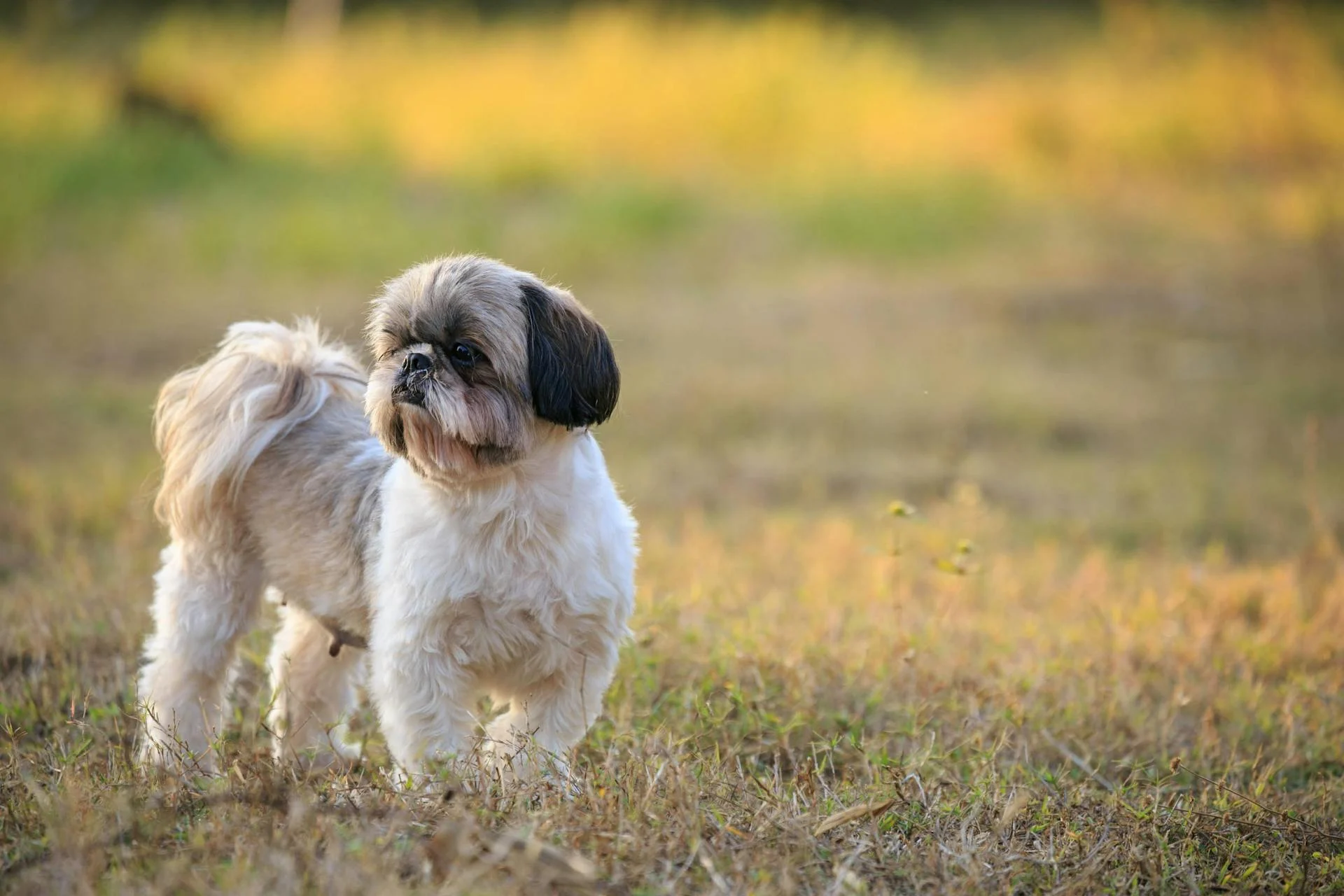
Rarely, cancerous conditions like epitheliotrophic lymphoma or melanoma can present in the skin, often with other symptoms. It's essential to get any new skin lesions or conditions checked by your veterinarian.
Here are some underlying health conditions that can cause skin issues in dogs:
Make sure to keep your dog up to date with parasite treatment, and only buy this from a reputable source. Weigh your dog to ensure you're dosing properly.
Parasites
Parasites can be a real nuisance for our furry friends. Cheyletiella mites, also known as "Walking Dandruff", are large enough to be seen with the naked eye and can cause intense itching.
These external parasites live and feed on your dog's skin, making them very itchy. They look very similar to white dog dandruff flakes, which can be confusing if you're not sure what to look for.
Some parasites, like mites, are easily transmitted to other pets living in the household. This is why it's essential to get your vet's advice on parasite prevention.
Treating Other Conditions
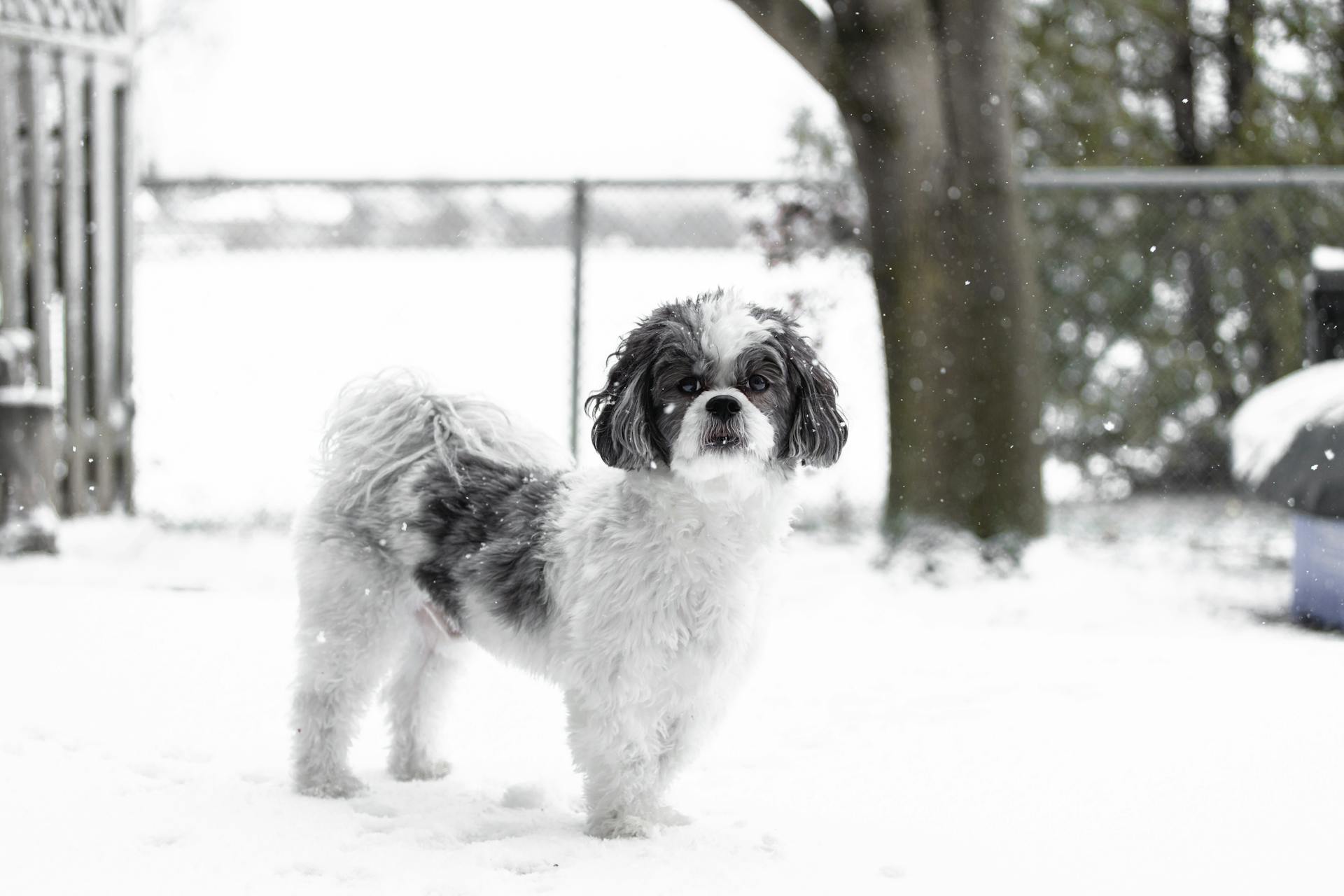
Treating other conditions is a crucial step in addressing your dog's dandruff. This may involve antibiotics for bacterial infections, antifungals for fungal infections, steroids and/or immunosuppressants for immune-mediated disorders, as well as allergy testing and medications.
Your veterinarian will need to diagnose any underlying conditions that may be contributing to your dog's dandruff. This may involve skin scrapes, culture tests, or blood work to check for systemic disorders.
If your dog has a secondary bacterial infection, antibiotics may be prescribed to treat it. Similarly, if yeast infections are present, antifungals may be used to clear them up.
To manage seborrhea, your veterinarian may recommend omega-3 fatty acid supplements, anti-seborrheic shampoos or sprays, corticosteroids, retinoids, or oral cyclosporine.
Here are some common underlying conditions that may be causing your dog's dandruff:
Frequently Asked Questions
Should I be worried if my dog has dandruff?
If your dog has mild or seasonal dandruff, it's usually not a cause for concern. However, if your dog is itchy, has a strong skin odor, or shows signs of dry, flaky skin, it's best to consult with a vet for a physical examination.
How do you stop dandruff in dogs?
To prevent dandruff in dogs, adjust your pet's grooming schedule and consider a sensitive skin dog food to reduce irritation. You can also explore additional solutions such as supplements and humidifiers to help alleviate the issue.
Sources
- https://vcahospitals.com/know-your-pet/seborrhea-in-dogs
- https://www.raisedrightpets.com/blog/my-dog-has-dry-flaky-skin-and-is-losing-hair/
- https://www.petmd.com/dog/conditions/skin/c_dg_canine_seborrhea
- https://www.dailypaws.com/dogs-puppies/health-care/dog-conditions/dog-dandruff
- https://www.vravet.com/site/blog/2023/01/15/how-to-get-rid-of-dandruff-in-dogs-causes--treatment
Featured Images: pexels.com
